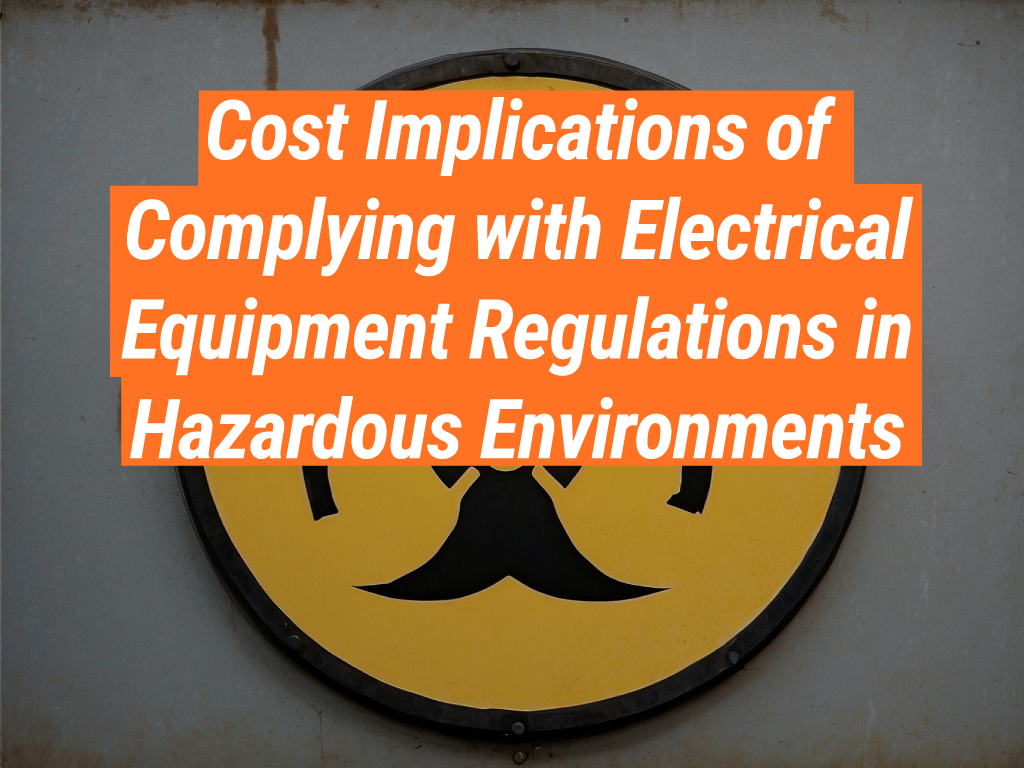When it comes to operating in hazardous environments, safety is paramount. This is particularly true for industries that use electrical equipment, where the risk of explosions and fires is high. At the Intrinsically Safe Store, we understand the importance of complying with electrical equipment regulations in these environments. However, we also recognize that compliance can come with significant cost implications. In this article, we delve into these costs and explore ways to manage them effectively. We invite you to visit our website to learn more about our solutions for hazardous environments.
The Importance of Compliance
Compliance with electrical equipment regulations in hazardous environments is not just a legal requirement; it’s a matter of life and death. Non-compliance can lead to catastrophic accidents, resulting in loss of life, property damage, and significant financial losses. Moreover, it can lead to legal penalties and damage to a company’s reputation.
- Equipment Costs: Electrical equipment designed for hazardous environments, also known as intrinsically safe equipment, is typically more expensive than standard equipment. This is due to the additional safety features and rigorous testing required to ensure they can operate safely in these environments.
- Installation and Maintenance Costs: Installing and maintaining intrinsically safe equipment can also be more costly. Specialized personnel may be required, and maintenance procedures can be more complex and time-consuming.
- Training Costs: Employees working in hazardous environments need to be adequately trained to handle intrinsically safe equipment. This training can be costly, both in terms of the direct costs of the training program and the indirect costs of employee time.
Managing Compliance Costs
While these costs can be significant, there are strategies that companies can employ to manage them effectively:
- Invest in Quality Equipment: While intrinsically safe equipment may be more expensive upfront, investing in high-quality equipment can result in lower maintenance costs and longer equipment life, leading to cost savings in the long run.
- Effective Training: Investing in comprehensive training can reduce the risk of accidents and equipment damage, leading to lower costs in the long run. It can also improve efficiency, further reducing costs.
- Regular Maintenance: Regular maintenance can prevent equipment failures and extend equipment life, reducing the need for costly replacements.

Case Study: The Value of Compliance
A case study that illustrates the value of compliance is the Deepwater Horizon oil spill in 2010. A failure to comply with safety regulations caused the disaster, which resulted in 11 deaths and significant environmental damage. Experts estimate the total costs of the disaster, including cleanup costs, legal penalties, and damage to the company’s reputation, to be over $65 billion. This far exceeds the costs of compliance, highlighting the importance of investing in safety.
Compliance with Electrical Equipment Regulations
Compliance with electrical equipment regulations in hazardous environments is crucial for safety and legal reasons. While compliance comes with costs, these can be managed effectively with strategic investments in quality equipment, effective training, and regular maintenance. Moreover, the potential costs of non-compliance, both in terms of financial losses and damage to reputation, far outweigh the costs of compliance. At the Intrinsically Safe Store, we offer a range of intrinsically safe equipment designed to help you comply with regulations and operate safely in hazardous environments. Contact us today to learn more about our solutions.


